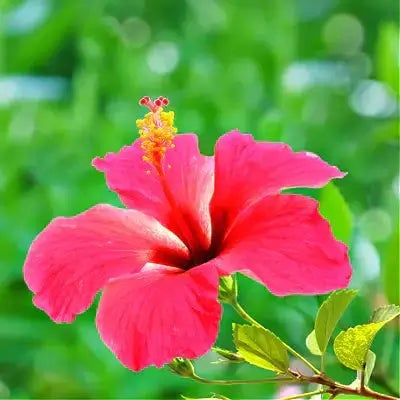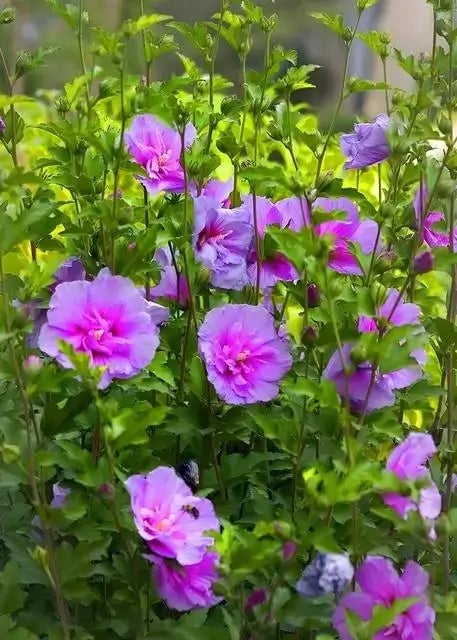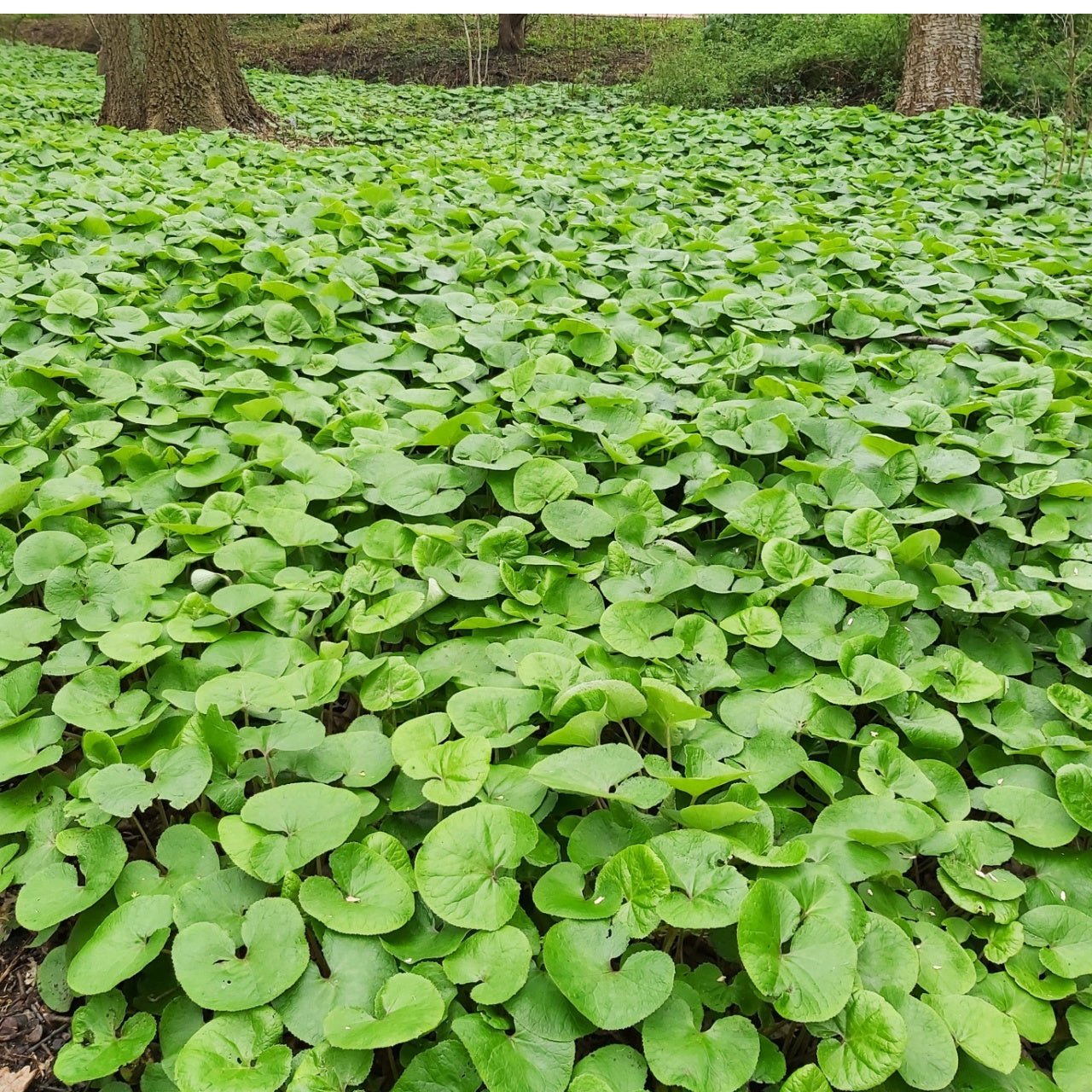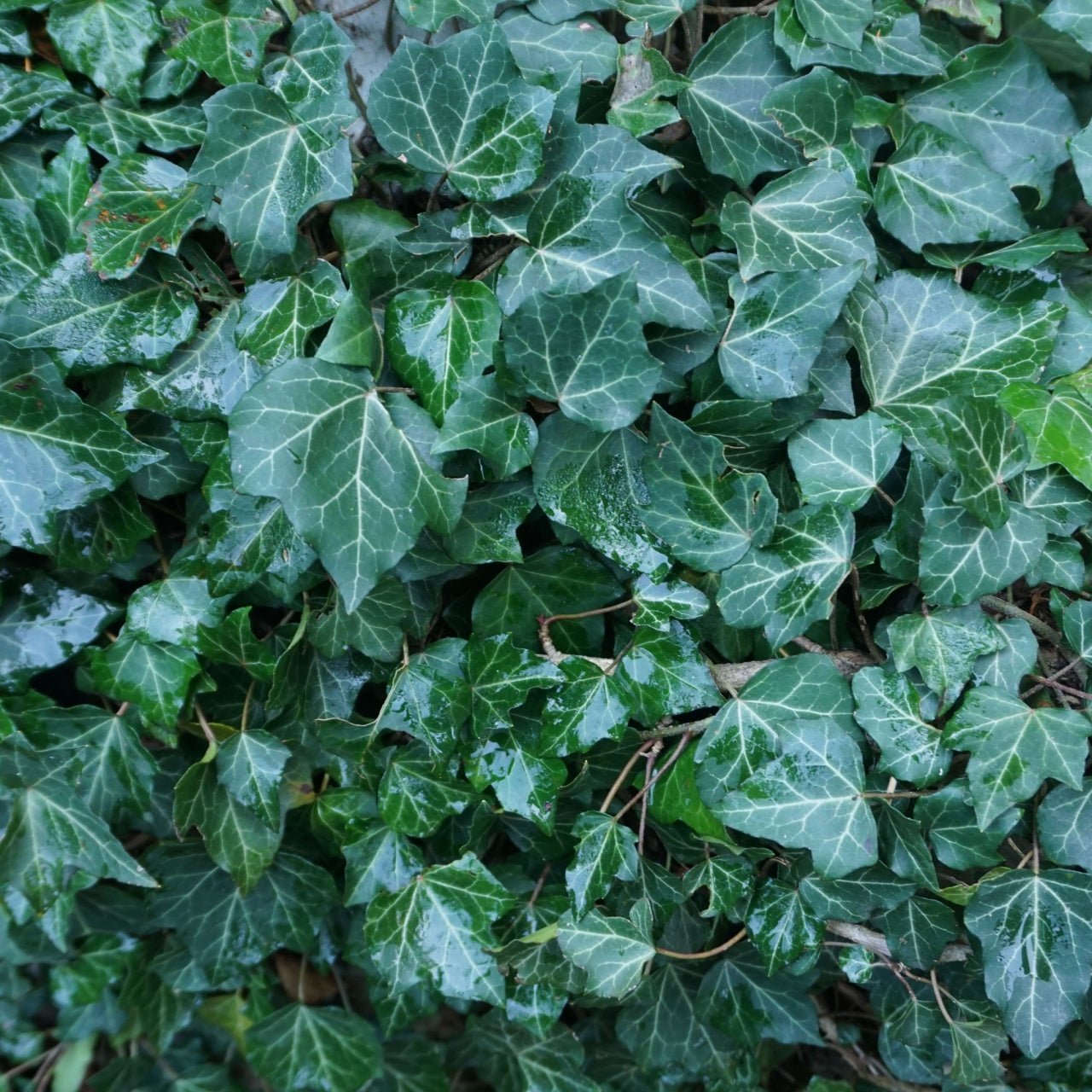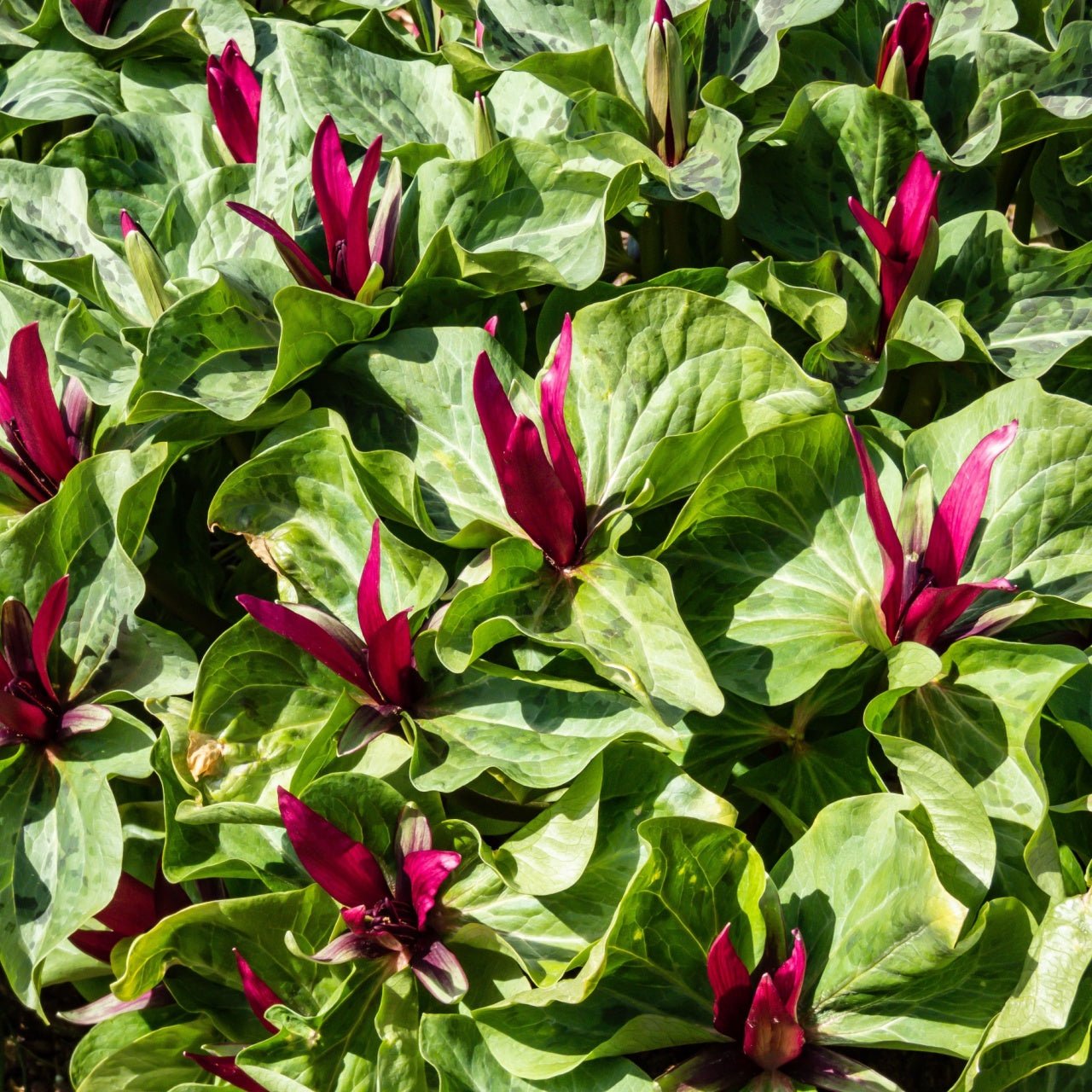Exotic Hawaiian Flowers
A Botanical Symphony of Beauty Hawaii, often called the "Paradise of the Pacific," is renowned for its stunning landscapes, azure waters, and vibrant culture. One of the most captivating aspects of this tropical haven is its rich diversity of flora, with a plethora of exotic flowers that grace the islands with their colors and scents.
From the striking Hibiscus to the delicate Puakenikeni, Hawaiian flowers have captured the imagination of people around the world. This exploration will explore the captivating world of 10 exotic Hawaiian flowers, each with unique characteristics and cultural significance.
1. Plumeria (Frangipani) Plumeria, known locally as Frangipani, is one of the most iconic Hawaiian flowers. Its fragrant blossoms come in various colors, including white, pink, yellow, and even multi-colored varieties. The flowers are often used in leis, which are given as a warm welcome or a symbol of affection. Plumeria trees are common in Hawaii, adorning landscapes and infusing the air with their intoxicating scent.
2. Hibiscus The Hibiscus, Hawaii's state flower, is celebrated for its bold and vibrant appearance. With its large, trumpet-like petals, the Hibiscus comes in various shades, from fiery reds to sunny yellows. These flowers are often associated with beauty, unity, and the islands' essence. Hibiscus is frequently used in traditional Hawaiian ceremonies and celebrations.
3. Anthurium Anthurium flowers are instantly recognizable due to their heart-shaped blooms and glossy leaves. These exotic beauties come in various colors, including red, pink, orange, and green. Anthuriums are commonly used in flower arrangements and add an element to any setting. They symbolize hospitality and are often given as gifts to convey warm wishes.
4. Bird of Paradise (Strelitzia) The Bird of Paradise flower resembles a colorful bird in flight, with its vibrant orange and blue petals. Though not native to Hawaii, these striking flowers have found a welcoming home in the islands' tropical environment.
Their unique appearance has earned them a special place in Hawaiian culture, often representing magnificence and freedom.
5. Orchids Orchids, with their intricate and captivating blooms, hold a special place in the hearts of flower enthusiasts worldwide. In Hawaii, orchids thrive in the lush climate and take on various shapes and colors. They symbolize love, beauty, and strength, making floral arrangements and gifts an excellent choice.
6. Puakenikeni The Puakenikeni flower, known for its delicate white blossoms and enchanting fragrance, is often strung together to create exquisite leis. Its name translates to "ten-cent flower" in Hawaiian, referring to its historical value as a precious adornment. The Puakenikeni's sweet scent lingers in the air and is a reminder of the islands' natural beauty.
7. Torch Ginger (Etlingera elatior) Torch Ginger is a dramatic flower with its tall stalks and vibrant hues. The flower's appearance is reminiscent of a flaming torch, giving it its distinctive name. Beyond its visual appeal, Torch Ginger is also used in traditional Hawaiian medicine for its purported health benefits.
8. Hawaiian Lei Flower (Mokihana) The Hawaiian Lei Flower, also known as Mokihana, is native to the island of Kauai and is a cherished symbol of the region. Its small, greenish-white berries are often strung into leis alongside other flowers, leaves, and materials. Mokihana leis are unique and culturally significant, representing the bond between the people and the land.
9. White Ginger (Hedychium coronarium) White Ginger, with its pristine white petals and delightful fragrance, is another gem of Hawaiian flora. Its alluring scent fills the air, making it a popular choice for lei-making and adorning special occasions. White Ginger plants are known for their rapid growth and are often found along roadsides and gardens.
10. Red Ginger (Alpinia purpurata) Red Ginger stands out with its striking, cone-shaped clusters of red bracts. These vibrant bracts encase the small, white flowers. Red Ginger is appreciated not only for its beauty but also for its potential medicinal properties. It's commonly used as an ornamental plant and is often featured in tropical landscapes.
The exotic Hawaiian flowers that grace the islands are more than just botanical wonder
They are cultural symbols, conveying messages of love, hospitality, and the profound connection between people and nature. Each flower, from the fragrant Plumeria to the regal Bird of Paradise, tells a story of the island's unique beauty and charm.
Whether adorning a traditional lei or enhancing a garden landscape, these flowers continue to captivate hearts and minds with their elegance and grace. The picturesque Hawaiian islands are renowned for their stunning landscapes, azure waters, and vibrant culture. Yet, amidst this tropical paradise exists a kaleidoscope of colors and fragrances that capture the essence of the islands in a way that words alone cannot convey—the exotic Hawaiian flowers. These blossoms are more than botanical wonders; they symbolize Hawaii's unique biodiversity, rich cultural heritage, and deep spiritual connections.
One cannot discuss Hawaiian flowers without mentioning the iconic Plumeria, known locally as "Melia." Its delicate petals, from pristine white to sunset shades of pink, orange, and yellow, are often strung into lei, the traditional Hawaiian garlands. Lei are symbols of affection, respect, and celebration, forming an integral part of Hawaiian culture.
The Plumeria's intoxicating fragrance and aesthetic appeal make it a beloved flower that graces festivals, ceremonies, and everyday life on the islands. Another enchanting flower native to Hawaii is the vibrant Hibiscus, or "Aloalo." With its trumpet-shaped blooms, the Hibiscus comes in various shades, each reflecting the vivid hues of the Hawaiian landscape. From deep crimson to sunshine yellow, these blossoms epitomize the islands' beauty. They are often worn behind the ear to signify one's relationship status—on the right, if seeking love, and on the left, if taken.
The Hibiscus embodies the intertwining of nature and human expression, representing emotions through its positioning and colors. Intricately linked to Hawaiian mythology is the Lehua, a blossom from the native Ohia tree. The legend speaks of the tragic love story between the volcano goddess Pele and a handsome warrior named Ohia. When Pele's advances were rejected, she transformed Ohia into a tree.
The red Lehua flower represents his transformation, and Hawaiian lore cautions against plucking this flower for fear of raining tears—the rain that falls when the Lehua is picked is believed to symbolize Pele's sorrow. This poignant tale showcases the deep connection between Hawaiian flowers and the stories that define the island's soul. Delving into spiritual significance, the indigenous Maile is an evergreen vine with tiny, fragrant blossoms.
It is often used in traditional Hawaiian ceremonies, symbolizing peace, love, and honor. Maile lei are treasured tokens exchanged between leaders, signifying mutual respect and unity. The presence of Maile in sacred rituals underscores the flowers' role not only as botanical beauties but also as carriers of cultural and spiritual values passed down through generations.
While not a flower, the ethereal Rainbow Eucalyptus tree paints a living masterpiece across Hawaii's landscapes. With its multi-hued bark peeling away to reveal shades of green, orange, and even blue, the Rainbow Eucalyptus is a testament to the islands' ability to host nature's most captivating artwork. These trees remind us of the diversity and wonder found within Hawaii's natural environment, inspiring awe and reverence for the land's intrinsic beauty.
The exotic Hawaiian flowers transcend their roles as mere botanical wonders.
They weave together cultural, history, and spirituality threads, encapsulating the essence of the islands they call home. Through their vibrant colors, intoxicating fragrances, and storied symbolism, these blossoms serve as a gateway to understanding Hawaii's rich heritage and people's deep-rooted connections to nature. Whether adorning a bride's hair on her wedding day or gracing an altar during a sacred ceremony, these flowers are more than meets the eye—they are living emblems of Hawaii's heart and soul.
Exotic flowers bring a touch of the extraordinary to any garden, and their benefits go far beyond their jaw-droppin' beauty. Down here in southern Tennessee, we love adding a little spice and flair to our landscapes; these blooms deliver just that. Let me tell you, there isn't anything like seein' a pop of vibrant color against the soft greens of our native plants. Exotic flowers can transform any ordinary yard into a show-stoppin', photo-worthy paradise.
One of the best things about these flowers is their ability to turn heads. They ain't your everyday daisies and petunias, no ma'am. Exotic flowers like orchids, hibiscus, and bird-of-paradise make folks stop and stare. Whether it's the rich reds, electric blues, or bright yellows, these blossoms add a magical flair. It's like havin' a little slice of the tropics right in your backyard.
But it's not just about looks. Exotic flowers can attract all sorts of beautiful critters, too. Hummingbirds, butterflies, and bees are drawn to their unique colors and fragrances. These visitors add life to your garden and help with pollination, which keeps your plants healthy and thriving. That's a win-win if you ask me.
Another significant benefit is their versatility. Many exotic flowers are well-suited for container gardening, which makes them perfect for folks with smaller yards or even apartment patios.
And let's not forget the joy they bring to special occasions. Exotic flowers make stunning cut arrangements for weddings, parties, or a centerpiece on your Sunday dinner table. They're a surefire way to make any event feel more elegant and memorable. Plus, they're great conversation starters. Trust me, you'll be the talk of the town when folks see the effort you've put into growing such a vibrant garden.
So, exotic flowers are the way to go if you want to add a little pizzazz to your landscape. They're beautiful, beneficial, and bring some of the unexpected to our good ol' southern gardens. Go on now, try 'em-you won't regret it!
Creating a Bed for Exotic Hawaiian Blooms
This guide offers basic instructions for soil preparation and light management, temperature control, and maintenance procedures to help achieve tropical flower cultivation that mirrors Hawaii's natural splendor.
1. Assess Your Climate and Microclimate
Hawaiian flowers can still be grown beyond tropical regions despite existing challenges. Your initial step should be to evaluate your local climate conditions honestly.
Temperature: Tropical blossoms need warm conditions to prosper and grow best when daytime temperatures stay above 70°F (21°C). During cold winter, you must safeguard plants through season extenders like row covers or greenhouses and move them into containers that can be relocated indoors when temperatures decrease.
Humidity: Tropical flowers prefer environments with moderate to high humidity. If you live in an arid region, consider microclimate modifications: To increase humidity, you can mist plants, group them to create a humid micro-environment, or install water features that enhance moisture in the air.
Sunlight: Hawaiian flowers thrive best when they receive full sunlight or partial sun exposure. Ensure your selected location gets at least four to six hours of direct sunlight daily. Residents of hot areas should provide their plants with some midday shade to prevent leaf scorch.
2. Selecting the Right Location
Please select your location based on its ability to protect plants from extreme weather while providing essential sunlight exposure. Plants benefit from south or west-facing walls because they create heat traps that warm the space and protect against wind.
Planting near buildings or fences helps to buffer against sudden temperature changes in your region. Tropical plants require quick water drainage since they do not tolerate waterlogged roots, which cause "wet feet."
3. Preparing the Soil
The cultivation of exotic flowers demands high-quality soil. The best soil for these plants to thrive is fertile ground that drains well and replicates the loose organic richness of tropical habitats. Here's how to prepare it:
Loosen and Amend: After removing all weeds, debris, and rocks from the soil, employ a garden fork or tiller to loosen the top eight to twelve inches (20–30 cm). Combine compost with well-rotted manure or other organic matter to boost soil nutrients and improve soil structure.
pH Considerations: Tropical plants require slightly acidic to neutral pH soil conditions ranging from 6.0 to 7.0 for optimal growth. Remember to follow detailed planting directions when growing your selected flowers. Doing a soil test will help you decide whether your soil requires any pH adjustments if you are uncertain.
Raise the Bed if Needed: Build a raised bed or berm for heavy clay soils or areas with poor drainage. High-quality soil that drains well provides roots with a healthy environment they need to thrive.
4. Building a Suitable Structure (Optional)
A temporary structure or enclosure can benefit your garden when you experience cooler nights or winter chill.
Polytunnels and Row Covers: These structures create a warmer environment around your plants while increasing humidity, which helps prolong the growing season.
Greenhouses and Sunrooms: Greenhouses and enclosed sunrooms offer reliable temperature control throughout the year by replicating tropical conditions.
Structures control temperature and humidity levels, which is essential for tropical blooms vulnerable to environmental shifts.
5. Planting and Spacing
Begin planting by following these essential steps once you're ready.
Positioning: If your bed follows an island-style layout, put taller plants at the back or center to prevent them from shading smaller plants.
Root Ball Depth: When planting young plants, you should dig more expansive holes than the root ball while maintaining the same depth. The crown should be positioned at ground level or slightly above to stop rot from forming.
Spacing: Ensure that every plant has enough space to reach its full mature size. A dense arrangement of plants traps moisture around leaves, creating conditions that allow fungal diseases to spread. Proper plant spacing allows each plant to receive enough sunlight and airflow.
6. Watering and Fertilization
Tropical flowers require regular watering because they cannot endure periods of drought. During hot weather, it's essential to water plants deeply and consistently to maintain moist soil without waterlogging. Organic material used as mulch around plants preserves soil moisture and prevents weed development.
Providing food nutrients is crucial for tropical blooms because they require heavy feeding. A balanced slow-release fertilizer or organic alternatives such as compost tea promote healthy plant development and plentiful blooms. Always adhere to the specific nutritional requirements for each flower type since different species need different feeding instructions.
7. Managing Pests and Diseases
All gardens face similar risks as tropical-style beds attracting pests and diseases. Apply these techniques to maintain control over potential garden issues.
Integrated Pest Management (IPM): Regular plant inspections will help you identify any damage caused by insects. Manually remove pests and introduce natural predators such as ladybugs to manage aphid or mealybug infestations whenever possible.
Good Air Circulation: Proper spacing between plants and pruning dense growth helps prevent fungal infections from forming in moist conditions.
Organic Sprays: Mild treatments, including neem oil and insecticidal soaps, are necessary to control severe infestations while protecting beneficial insects and managing common garden pests.
8. Seasonal Adjustments
Transitional months in cool climates require additional hardening measures.
Winter Protection: Once night temperatures fall below their minimum temperature tolerance, bring your container tropical flowers indoors or into a heated greenhouse.
Pruning: Light pruning after the growing season enables tropical species to eliminate dead or diseased foliage while stimulating healthy growth during spring.
Mulch or Row Covers: A protective layer of mulch and row covers will guard in-ground plants from sudden frost.
You can create a garden bed for exotic Hawaiian flowers outside of tropical regions by carefully managing microclimate conditions and soil quality and providing proper ongoing maintenance. The right location, soil management, suitable warmth and humidity levels, and proactive pest control enable you to create a Hawaiian garden in your backyard. Suppose you give these tropical flowers regular care and patience. In that case, they will respond by showing colorful vibrancy and exotic beauty, bringing island life to your home regardless of where you live.
Read more
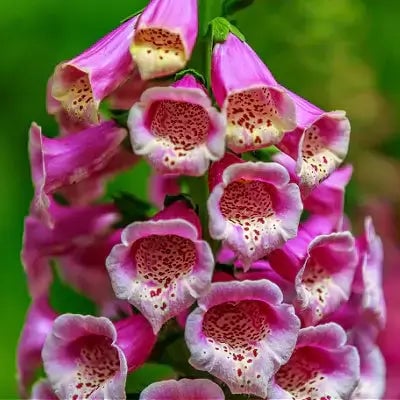
Toxic Garden Plants Although you may use your garden as a relaxing sanctuary, there may be danger lurking in its allure, especially in the case of younger children and your family pets. Some beaut...

Perennials are not only beautiful, but they are earth friendly Perennial Plants have many environmental uses. They improve the soil. They clean toxins from the soil. Low maintenance, and they...


